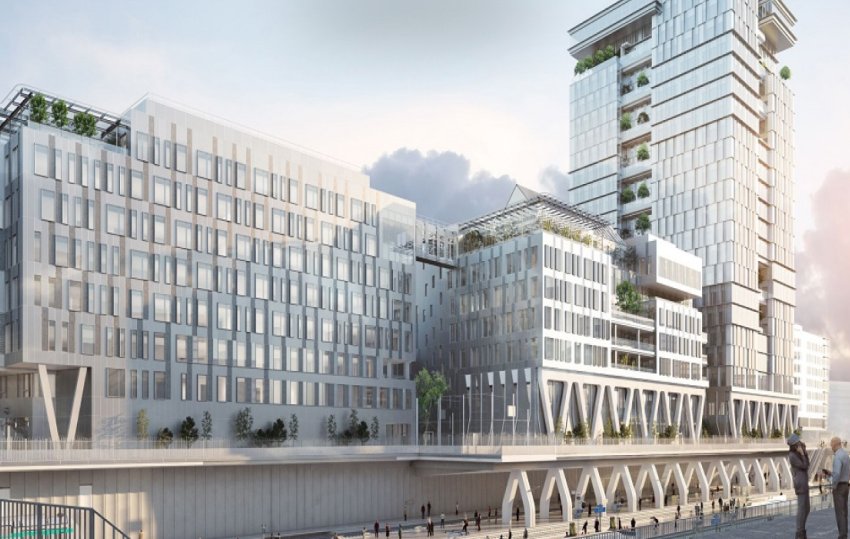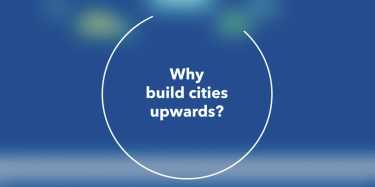
How to build the city of the future? L’archipel, VINCI’s head office, is one example
Building the city of the future involves understanding the challenges facing the environment and society, today and tomorrow. Building the city above the city is one way of curbing urban sprawl and opening the door to circular, positive urbanisation that benefits city dwellers and future generations. One example of this is l’archipel, which is VINCI’s head office – and a new take on nesting companies in cities.
On the same focus
Reversing soil sealing - Soil sealing and the need to slow down fast
How to limit soil sealing
4 unusual urban space recycling projects
Building the city of the future: avoiding urban sprawl and fostering social mix
Sprawl is one answer – and was, for decades, the only answer – to population influx. But it has several flip sides including soil artificialisation, gentrification and long commutes . It spawns single-purpose quarters – business districts, industrial parks, residential neighbourhoods, shopping areas, etc – and cars reign supreme in it.
A new perspective on cities involves making smarter use of buildings. This means creating modular spaces that can be repurposed as time goes by. Creating a close and connected city, where workplaces, recreational spaces, homes and cultural attractions are within reach of each other, helps to make urban areas more multipurpose and fosters social mix.

L’archipel, VINCI’s head office, is built to blend into the city of tomorrow
Building VINCI’s new headquarters, l’archipel, was a technical challenge. It was also aimed at two goals: showcasing the Group’s business lines and their expertise, and contributing to responsible urbanisation, designed to stand the test of time and for people.
L’archipel was built on a 300 metre long brownfield overlapping with a rail line, skirting Boulevard de La Défense (in Nanterre, west of Paris). The idea was to recycle disused space and at the same time build the city above the city.
This vast architectural project, which encompasses offices, shops and a new station on RER Line E, has become part of “a city that brings together transport networks, public spaces and workplaces, in serene, natural and generous cohesion,” as Marc Mimram, one of the project’s architects, puts it. L’archipel, in other words, is an “extension of public space, which stretches under and through it with the station.”
The city of the future does not superimpose, but instead combines functions, and the buildings are often linked with one another.

Jean-Paul Viguier, project's Architect
Building cities while curbing their environmental impact
A city has a substantial impact on the environment, for example on account of the high population density in it, transport systems and soil artificialisation. If it contributes to climate deregulation, it also has a substantial role to play in fixing it. Ideating the city of tomorrow involves taking into account the impact of construction on its surroundings (in terms of greenhouse gas emissions at worksites, the use of long-lasting low-carbon materials, etc.) and understanding the looming climate changes (in terms of rainfall, temperature, etc.) that today’s buildings need to address in order to remain comfortable for people tomorrow. These ethical and environmental obligations are spurring technical breakthroughs – and at the same time compelling the entire construction sector – from raw materials suppliers to architects and on to engineers and decorators – to factor ecological concerns into their vision for buildings.
Very-low-carbon concrete, machinery that releases less CO2 and channels to reuse equipment are only three of the breakthroughs from women and men in the Group that are aimed at reducing the construction sector’s environmental impact and attracted the spotlight at the VINCI Environment Awards.
Innovation to reduce l’archipel’s environmental impact
L’archipel was designed to showcase for the Group’s innovation and know-how. It is a real-life example of how VINCI plans to reduce its greenhouse gas emissions by 40% and meet the highest environmental certification standards. The use of recycled or low-carbon concrete, building-integrated photovoltaic technologies, temperature-regulating ventilated slabs and bio-sourced materials are a few of the measures to cushion this building complex’s impact on its environment.
Building the city above the city: explore l’archipel, VINCI’s head office
L’archipel is made up of five buildings, resembling an archipelago of interlinked islands.
- 5 buildings, incl. 4 connected by footbridges
- Spaces to work, eat, relax and have meetings
- Almost 90 outdoor areas
- 1 food court, 2 self-service restaurant, 1 salad bar
- 74,000 sq. metres of offices
- Capacity for 4,000 employees
- 1,500 sq. metres of shops
- Certifications:
OsmoZ certifying the quality of the work environment.
HQE Exceptionnel (covering energy, environment, health and comfort) and BREEAM Excellent (covering environmental, social and economic performance)
Most viewed
Explore more
Words from researchers: let's fight stereotypes!
Charlotte, a research fellow at École des Mines, and Erwan, a university professor and researcher at AgroParisTech, talk…
Fondation VINCI pour la Cité: opening the door to others is another way of reaching out!
With some 1.3 million organisations and 2 million employees, France can lay claim to a dynamic network of associations…
Sea water desalination: a solution for turning the tide on the water scarcity crisis?
As water shortages continue causing havoc in a growing number of regions around the world, an age-old idea is experiencing a…


